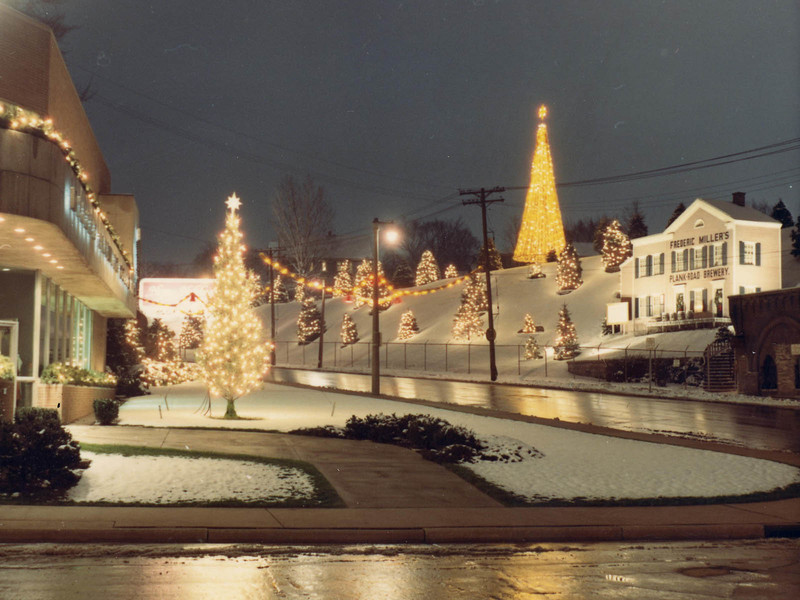There was a time in Milwaukee’s history when the city was known as the "Selma of the north." Sadly, many contemporary educators and students feel that this is a chapter in Milwaukee history that is not given its due in the classroom.
But once in a while, we are reminded that the power of the ongoing struggle for civil rights still has the ability to inspire and even transform.
Forty-six years ago today, 200 members of the NAACP Youth Council marched through Kosciuszko Park to protest unfair housing legislation. They were met by a hostile crowd about 8,000 strong, by police estimates. The marches and demonstrations lasted for 200 days, culminating in the April 8 march through Downtown with 15,000 participants.
September 2007 was a chance to highlight this important part of Milwaukee’s history. Activists like Margaret "Peggy" Rozga (wife of James Groppi and member of the Youth Council) collaborated with local historians and various organizations in the city, including the Wisconsin Black Historical Society and the Interfaith Conference of Greater Milwaukee to plan a series of events that month which included exhibitions, conferences, march reenactments and even an original play written by Rozga.
The effect of the anniversary celebrations inspired Jasmine Alinder, professor of Public History at UWM, to seek a more permanent placement for the civil rights legacy in the modern educational system.
"It’s one thing to do a weekend of events," she said. "But (I wanted to) make this part of what our college students are learning about on a regular basis."
Thus was born the March on Milwaukee Civil Rights History Project, a digital collection representing primary sources from the University of Wisconsin-Milwaukee Libraries and the Wisconsin Historical Society detailing the struggle for equality during the 1960s. Papers, photographs, video footage, oral history interviews and more are contained in the database, making it a wealth of information for students of history.
But Alinder wanted the collection to be highly accessible, reaching beyond the college level to high schoolers – but not just to the high achievers.
"Instead of trying to work with hundreds of students at once, we ended up working with 12 to 20 students. We weren’t sure how the project would take shape," she said. "This project was pretty time-intensive, so we had to find a teacher who would give that kind of time, and really have this take over the classroom at times. It’s harder to do in this era of training kids to take tests."
Luckily, Alinder found a partner for the database in the non-profit group Arts @ Large, who seeks to promote education through arts for students in the Milwaukee Public Schools.
"It’s primary source material, so you wouldn't necessarily think an arts organization would be interested, but they think very broadly about the arts and about the kinds of things students can have creative responses to," said Alinder. In 2010, Arts @ Large identified Northwest Opportunities Vocational Academy (NOVA) teacher Kelly DiGiacinto, who was eager to have her junior history class exposed to this wealth of Milwaukee social history.
DiGiacinto was Shaundrea Riley’s 11th-grade history teacher at the time. At first, when researching the online database at UWM became part of her curriculum, Riley was skeptical. It wasn’t an area of history that she had much acquaintance with or interest in.
"Honestly, my first thoughts were like, I don't want to do this, it's going to be boring, why are we doing this?" said Riley. "Then after awhile it started getting interesting and I felt like there was really a huge dark secret hidden from teens today that we should be aware of. Not just teens, however – Wisconsinites in general, (and) the nation."
As the students’ interest in the source material peaked, it was decided that they would be trained to become functioning historians. For almost every student involved, it was the first encounter they had with history at this degree. The students were tasked with compiling and presenting a real-life museum exhibit.
"None of them had curated a museum exhibition – I mean, how many of us have?" said Alinder. "I don’t think they had done much, if any, primary source research before and they knew next to nothing about Milwaukee’s civil rights history."
The students were taught how to study the primary source material, including oral histories and photographs, with the intent of creating a museum exhibit. And soon, the once-indifferent students had assume a profound sense of ownership over the struggle for civil rights in their city.
"At a certain point it wasn’t enough for them to listen to an oral history," said Alinder. "They wanted to do the interviewing. They wanted to be the historians."
The students invited important figures from the days of the Youth Council to their classroom. Rozga was one of the guests, along with NAACP Commandos member Prentice McKinney and Vel Phillips, the first woman and non-white member of the Milwaukee Common Council.
Rozga says that she "cherishes" the role of keeper-of-the-flame, and was excited to address a new generation of activists.
"I never wanted to be a nostalgia act. We get our sense of what is possible from history," she said. " If it's been done before , then it can be done again. If young people found a sense of purpose in their lives through these civil rights actions, then young people today, frustrated by seeing injustice, can find a model to address their own issues. If young people stood for justice then, well, then young people today can do so as well."
For her part, Riley expressed frustration that she had not learned sooner about the civil rights movement that had essentially taken place in her own backyard.
"We could learn about the South," she said, referring to the sister struggle against discrimination and segregation led in Southern cities. "I didn’t understand that ... it made me want to get more involved with my community. Educationally, it made me smart to the fact that Milwaukee had a past so violent and well-hidden."
Rozga agreed. "Many teachers from middle school to college wanted access to materials that will allow them to teach Milwaukee civil rights history, and the March On Milwaukee Civil Rights History Project gives them the resources they sought," she said. "For those teachers who hadn't already envisioned the possibilities of teaching Milwaukee civil rights history, the existence of the MOM Civil Rights History project helps establish for them and for administrators and curriculum planners and for historians that this is subject matter worthy of attention."
The students named their exhibit, which opened on April 20 of last year, "March to Equality," and incorporated a significant performance aspect, with students playing the roles of Father Groppi, Vel Phillips and others.
"There was a point where they started to keep track – there was a tally for how many people they would tell this history to," said Alinder, noting that the students trained themselves to be docents at the exhibition. "It became like a competition. They felt like it was their obligation to not just know it but to share it."
Later that year, the students also began the Freedom EXPRESSions Bus Tour.
"(We) took people around Milwaukee to the significant areas the marches took place. That's where we acted out scenes from the Common Council, did poems that either members of the marchers wrote or students wrote, and we sang songs that the marchers did during the movement," said Riley. "It was pretty much like a step-into-the-past type of experience. It was so much fun, so educational, and I was happy to finally be able to teach something. Something important!"
Riley plans to attend the University of Wisconsin-Waukesha this fall and hopes to become an FBI profiler. She says that her knowledge of the March on Milwaukee – and new-found role models like Rozga, Phillips and McKinney – continue to inspire her.
"This movement was very important to them and like anybody who strongly believes in something, they'll fight for it," she said. "They were truly interesting people."
Colleen Jurkiewicz is a Milwaukee native with a degree in English from the University of Wisconsin-Milwaukee, and she loves having a job where she learns something new about the Cream City every day. Her previous incarnations have included stints as a waitress, a barista, a writing tutor, a medical transcriptionist, a freelance journalist, and now this lovely gig at the best online magazine in Milwaukee.





